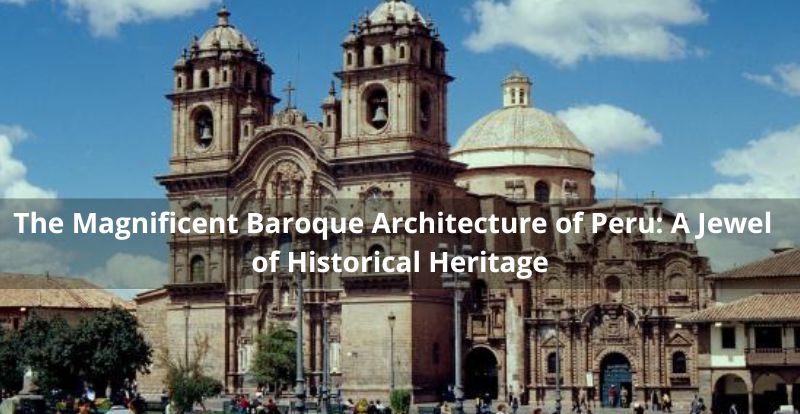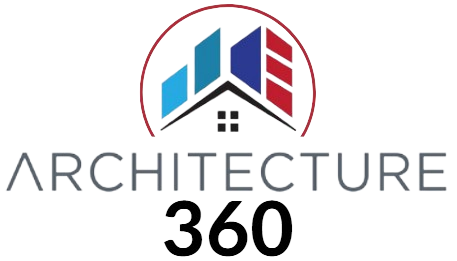The Magnificent Baroque Architecture of Peru: A Jewel of Historical Heritage
The Magnificent Baroque Architecture of Peru: A Jewel of Historical Heritage. The Baroque architecture in Peru stands out as a testament to the rich cultural heritage of the country, blending European and indigenous influences into a unique fusion. Flourishing during the 17th and 18th centuries, it represents a pinnacle of colonial architecture, characterized by its ornate decorations and grandiosity. This article delves deep into the main features of Peruvian Baroque architecture, taking a tour of some of its most significant examples across the country.
It may interest you: Baroque Marvels of Madrid: Exploring 10 Must-See Buildings
Video: Baroque: The First International Art Movement (Waldemar Januszczak Documentary) | Perspective

Exploring the tapestry of Peruvian baroque architecture
Baroque Architecture in Peru:
A Unique Fusion Baroque architecture in Peru is distinguished by its amalgamation of European and Andean influences, resulting in a style unparalleled elsewhere in the world. Particularly notable are the churches and cathedrals, which utilized materials such as adobe and stone to craft intricate decorations and elaborate Churrigueresque altarpieces.
Religious Figures as Pioneers The foremost proponents of Baroque architecture in Peru were religious figures, who erected vast architectural complexes to evangelize the indigenous population. Emblematic examples include the Lima Cathedral, the Santo Domingo Convent in Cusco, and the San Francisco Church in Arequipa. Peruvian Baroque architecture stands as a testament to the country's cultural and historical richness, remaining an enduring source of inspiration today.
Advantages and Disadvantages:
Advantages:
Highly Ornate: Peruvian Baroque architecture is highly ornamented, boasting elaborate details that make it one of the most impressive and intricate forms of art in the country. Historical Testimony: As part of Peru's cultural legacy, Peruvian Baroque architecture serves as an invaluable historical testimony to the colonial era, offering insights into the customs, traditions, and lifestyles of that time.
Disadvantages:
Excessive Decoration:
One of the main drawbacks of Peruvian Baroque architecture is its tendency towards excessive decoration. Often, buildings feature overloaded elements such as intricate moldings, sculptures, and reliefs, which can overwhelm and obscure the true beauty of the architectural space. Limited Sustainability: Peruvian Baroque architecture was designed and built in an era where sustainability was not a concern. Consequently, many buildings suffer from structural and maintenance issues that hinder their long-term preservation. Additionally, these buildings are often constructed with unsustainable materials that harm the environment and require frequent replacement. Lack of
Open Spaces:
Another issue with Peruvian Baroque architecture is its focus on ornamental and decorative features, often at the expense of creating open spaces and usable communal areas. As a result, many Peruvian Baroque buildings lack squares, gardens, or courtyards that facilitate social interaction and recreation, making them less habitable and appealing to those seeking to live or work in them.
Exploring the Characteristics:
Baroque architecture is characterized by its curved lines and the incorporation of other fine arts such as sculpture and painting into architectural works. During the 18th century, most temples in Europe were designed and built in this style, utilizing excessive ornamentation and richness of detail to create dramatic and emotional effects. The illusion of movement and dramatization are the main features of Baroque architecture.
Definition in Peru:
Baroque in Peru, also known as Andean Baroque or mestizo architecture, is characterized by a fusion of indigenous and European elements. This artistic movement emerged during the Viceroyalty of Peru between the 17th and 18th centuries and is reflected in architecture, sculpture, painting, and crafts. Exuberant ornamentation, emphasis on decoration, and the use of local materials and indigenous techniques are some of the distinctive elements of this style.
Emergence in Peru:
In the 17th century, Baroque architecture arrived in Peru amidst a period of artistic splendor among local craftsmen. The interpretation and adaptation of the style to the Peruvian environment transformed the viceroyalty into the epitome of American Baroque.
European Influence:
Peruvian Baroque architecture, emerging in the 17th century, is a cultural legacy that merges European aesthetics with indigenous elements. During Spanish colonization, architects and sculptors brought their talent and knowledge to Peru, creating monumental works strongly influenced by European Baroque architecture but adapted to local conditions. Thus, temples, churches, and monuments were created, which today serve as references to the country's cultural heritage. The fusion of cultures is evident in the facades' decorations, the use of materials, and religious iconography.
Impact on Colonial Society
: Baroque architecture in Peru is characterized by its decorative exuberance and the blend of indigenous and European elements in colonial architecture. The San Pedro Church in Lima is a notable example, with its facade adorned with statues of saints and Andean animals.
This architectural style had a significant impact on colonial society, as the construction of large churches and government buildings demonstrated the wealth and power of the Church and the Spanish State in Peru. However, it also reflected the ability of the indigenous and mestizo population to adapt and reinterpret European artistic forms in their own cultural context.
In summary, Peruvian Baroque architecture is characterized by its exuberance, complexity, and abundant, detailed ornamentation. Spanish influence and the creativity of Peruvian architects gave rise to a distinct style that flourished during the 17th and 18th centuries in colonial Peru.
The use of local materials such as stone and adobe, as well as the incorporation of indigenous decorative elements, such as Andean iconography in churches, are some of the distinctive features of Peruvian Baroque. Today, these constructions are an invaluable showcase of Peru's architectural and cultural heritage, cherished by both local residents and international visitors who marvel at their beauty and complexity.
Si quieres conocer otros artículos parecidos a The Magnificent Baroque Architecture of Peru: A Jewel of Historical Heritage puedes visitar la categoría Baroque.

Leave a Reply